Okay … migration is really starting to get going … even if the temperature was 23F at sunrise this morning. However, some of my local ponds are ice free, and one only finds Golf Course and the Forest Hill Cemetery. Both locations have ponds which ice out early, and the birds are drawn to these locations like magnets.
The cemetery has a flock of geese maintained by the staff, and birds attract birds. This morning I found a Common Merganser couple and a Wood Duck. I am able to use my car as a blind and get quite close to the waterfowl. It helps that the resident Mallard population is so used to humans that they never take alarm, which relaxes the more wild ducks.
Common Mergansers (black head is the male, rust head is the female)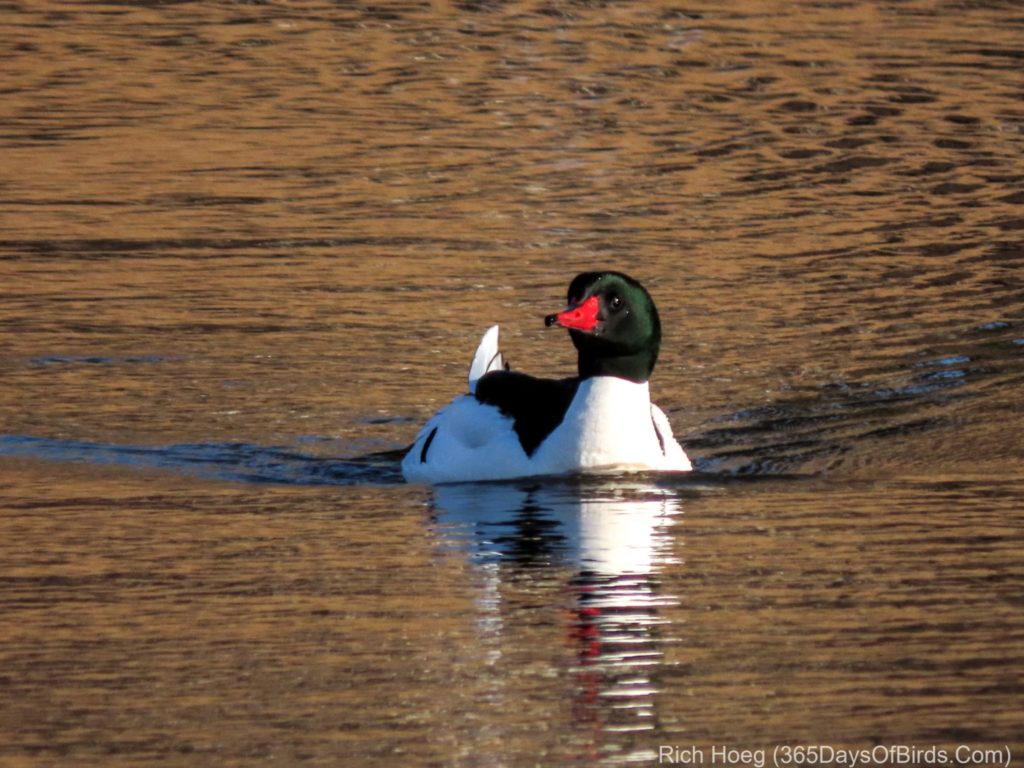
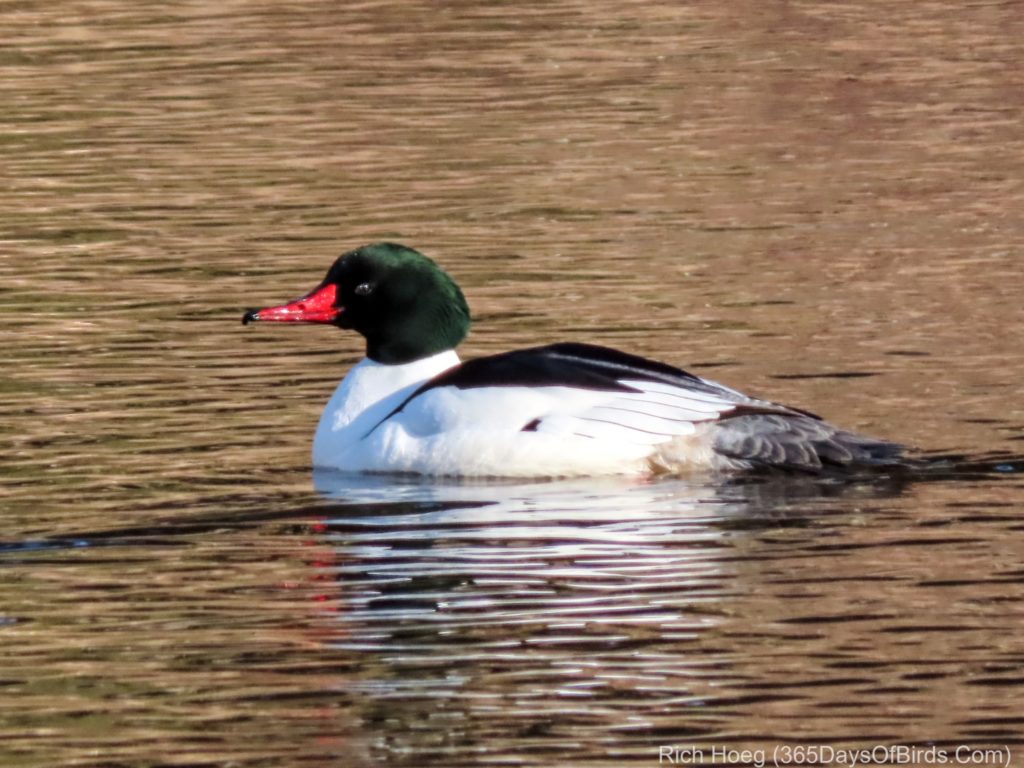
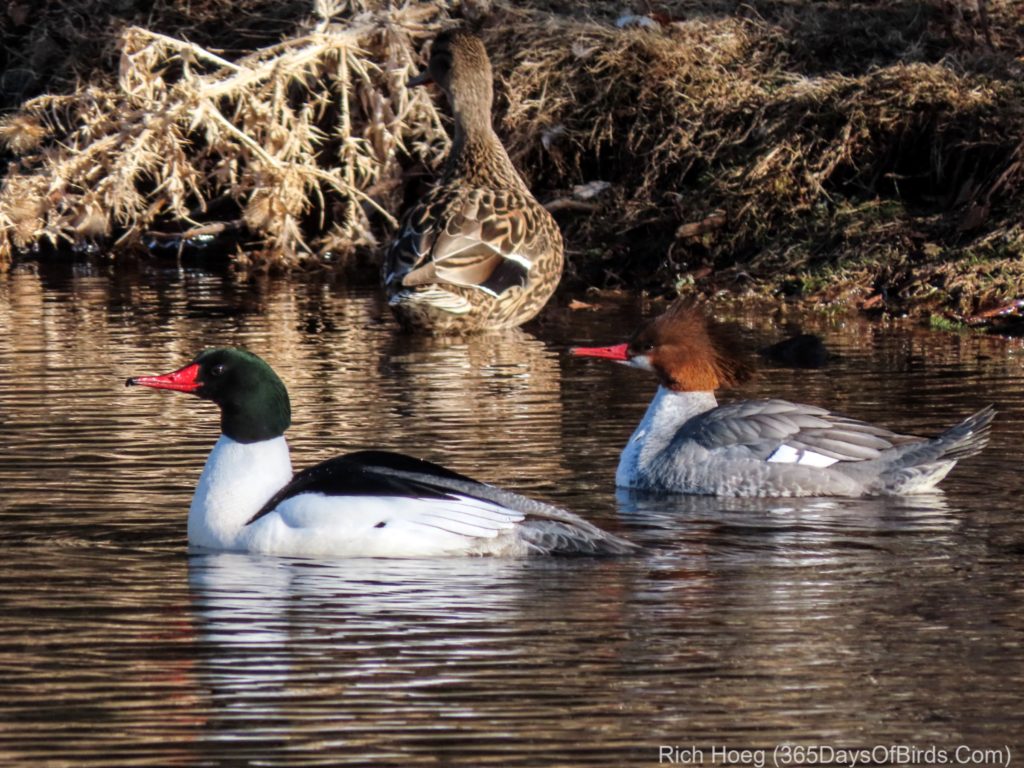
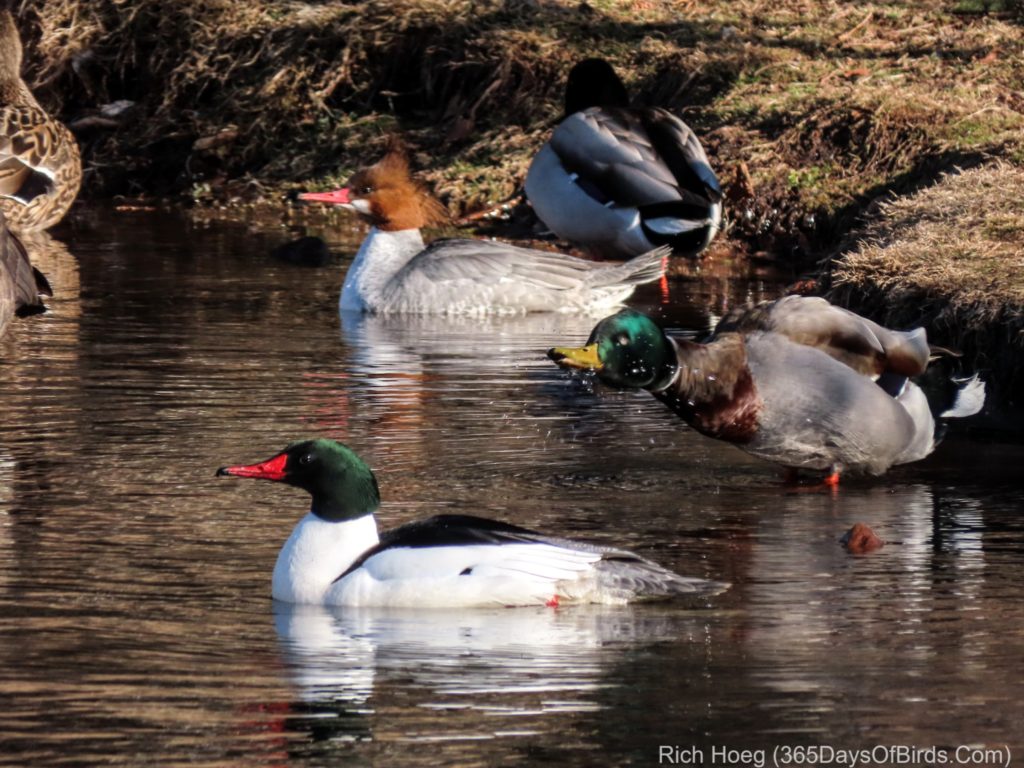
Next if was off to the municipal golf course near my house. This set of links has a series of five ponds which are set next to woods, meadows and wetlands. Birds avoid the big lake and use the ponds as a resting spot during migration. The course is only a mile from Lake Superior.
Bluebirds! (a very uncommon bird for my region … “washed out” blue is the female)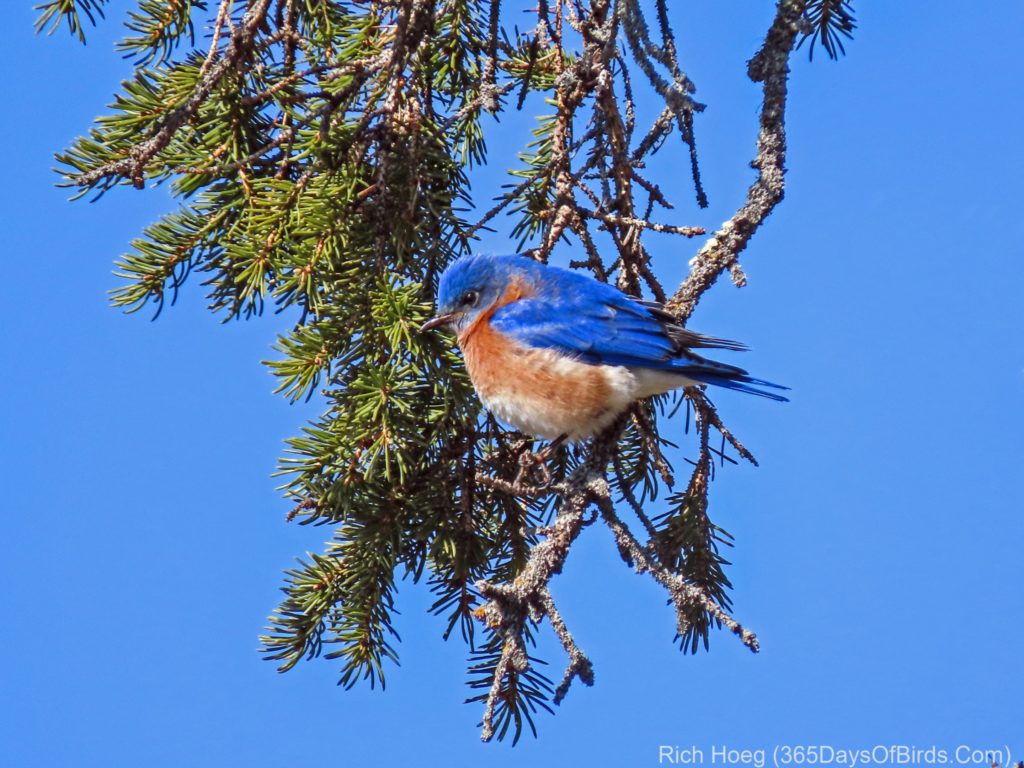
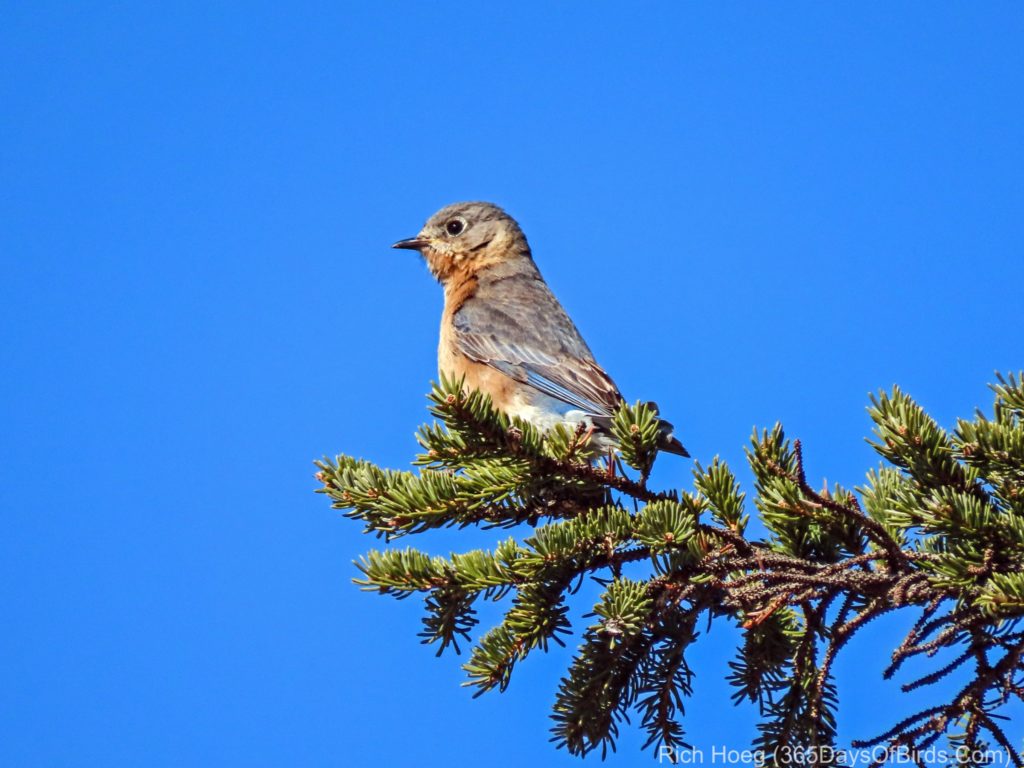
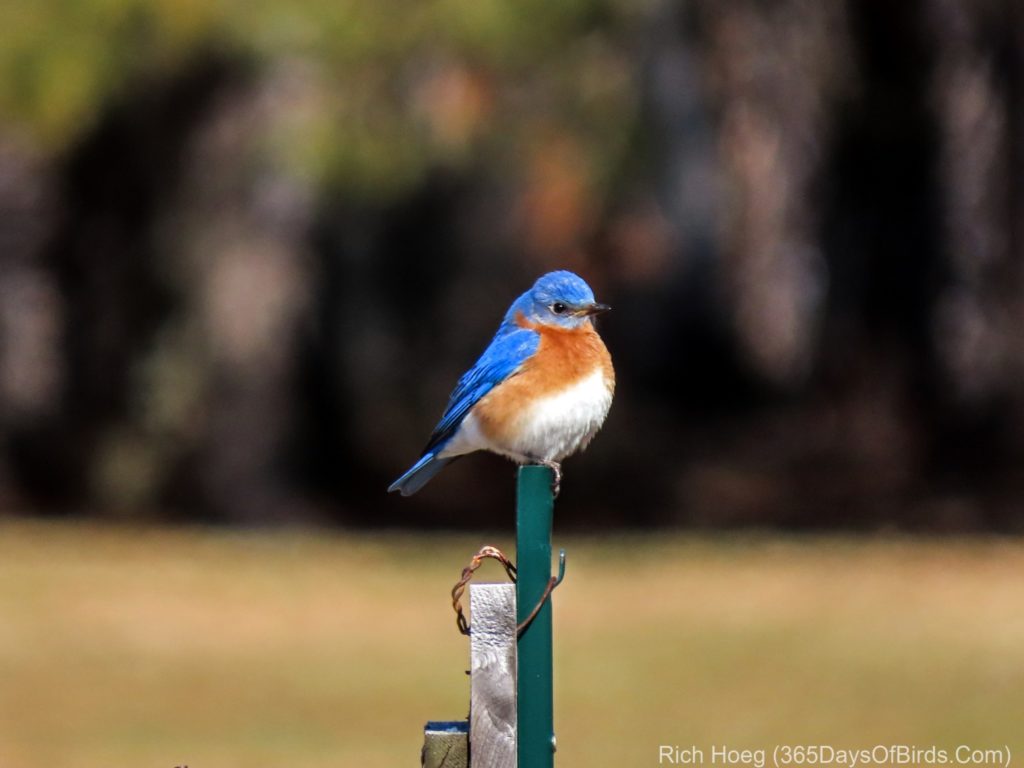
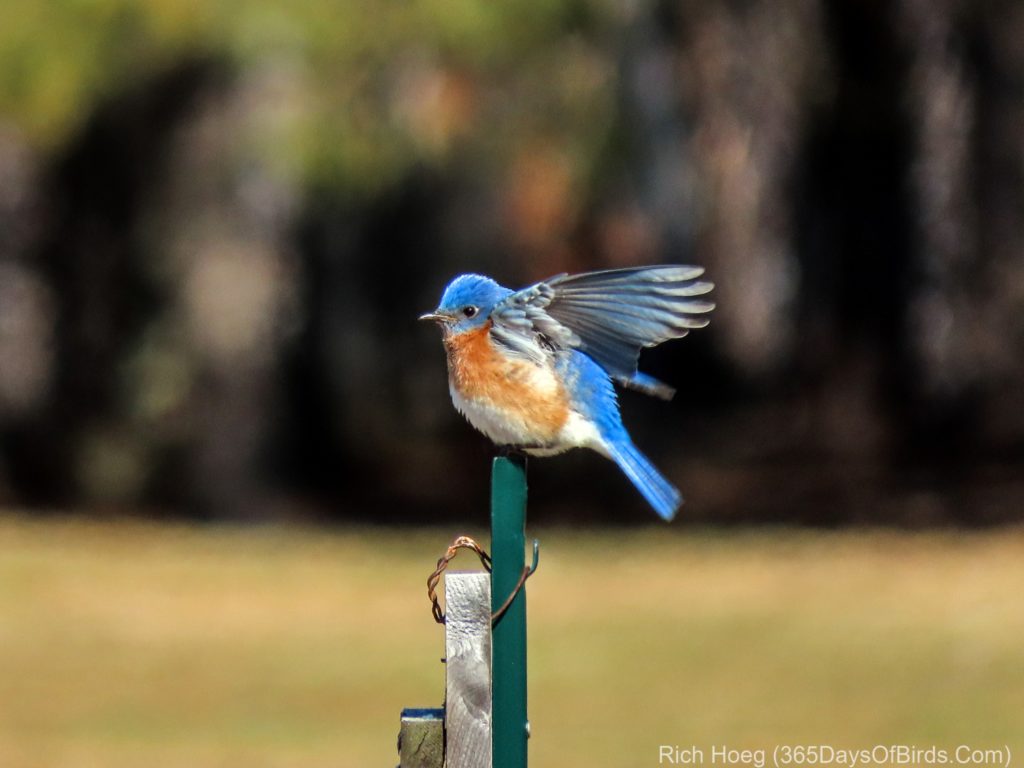
As a fyi … I have these images in higher resolution, but downgraded the photos a bit such that this web page would load a bit quicker on mobile devices.
Discover more from 365 Days of Birds
Subscribe to get the latest posts sent to your email.
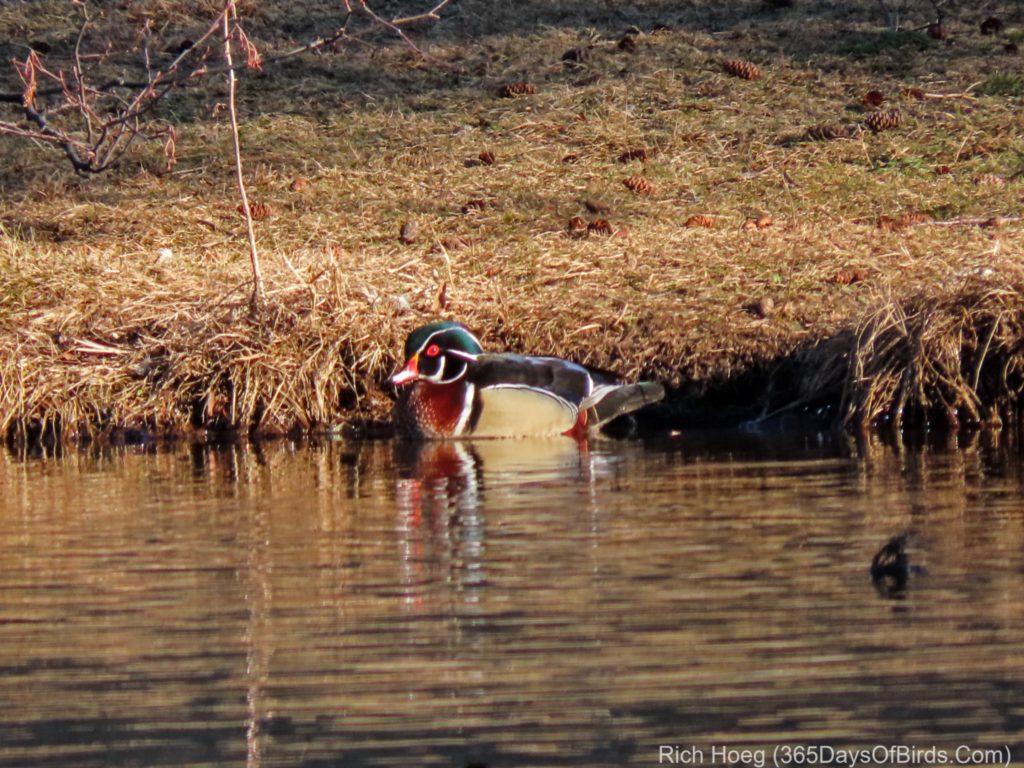
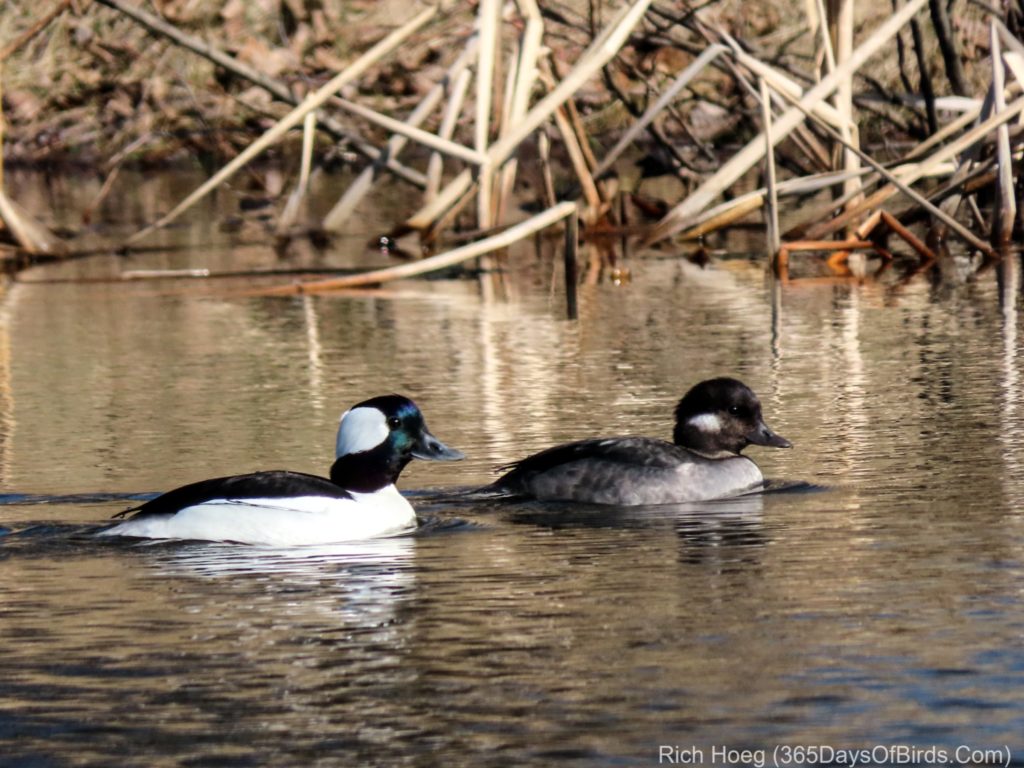
Don: With many birds with dark black, deep blue or metallic like plumage colors, the appearance of their feathers varies dramatically given sun conditions. One of my favorite examples is male tree swallows. Sometimes they look just bluish black, but in the right sunlight … uff dah! Thus, I am not sure there is a good answer to your question other than to note most plumage is much more vibrant during breeding season.
Hi,The males i see here, the head is more dark green in the breeding stage, E- Bird list the head as green. Is it black otherwise ? Don